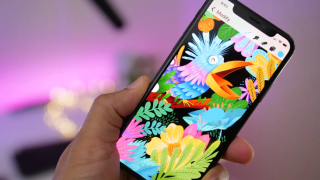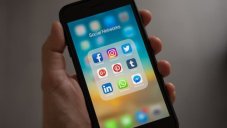This Tattoo-Like Artificial Throat Can Help Mute People Speak Again
Kumari Shrivastav - Aug 19, 2019

A team of Chinese researchers has invented an artificial throat with an appearance similar to a neck tattoo that helps mute people speak again
If the vocal cords suffer from only one devastating injury, there’s a great likelihood that these people may lose their speaking ability forever. This disability can create lots of problems in different aspects of their life, ranging from relationships to careers.
Recently, a group of researchers from China announced their latest invention called “artificial throat” that could grant patients who lose their speaking ability an opportunity to hear their voice again. In addition, there’s no need for patients to participate in a surgical operation to be able to use the device.
Sticker Shock
As stated in the paper by these researchers, which was featured in the ACS Nano journal, the making of an artificial throat starts with the laser-scribing of graphene on a thin piece of film made from vinyl alcohol.
After that, a flexible device twice the size of the thumbnail of an adult is attached to the front of the throat of a volunteer through the use of water. This process is similar to the way temporary tattoos are affixed.

Finally, electrodes are used to make a tiny device attached to an armband that was equipped with different electronics, a decoder, and a circuit board.
Complete Speaking Ability
After using this device, the only thing voluntary patients need to perform was to make their throat move as if they were talking but with no noise coming from their throat. The device would turn the movements from their neck into words that can be heard, including “No” and “OK.”
In an official statement issued to newspapers, the researchers mentioned the likelihood of patients being able to make throat signals that could be translated into speech by the device after being appropriately trained.
Featured Stories

Features - Jan 23, 2024
5 Apps Every Creative Artist Should Know About

Features - Jan 22, 2024
Bet365 India Review - Choosing the Right Platform for Online Betting

Features - Aug 15, 2023
Online Casinos as a Business Opportunity in India

Features - Aug 03, 2023
The Impact of Social Media on Online Sports Betting

Features - Jul 10, 2023
5 Most Richest Esports Players of All Time

Features - Jun 07, 2023
Is it safe to use a debit card for online gambling?

Features - May 20, 2023
Everything You Need to Know About the Wisconsin Car Bill of Sale

Features - Apr 27, 2023
How to Take Advantage of Guarantee Cashback in Online Bets

Features - Mar 08, 2023
White Label Solutions for Forex

Review - Jul 15, 2022
Comments
Sort by Newest | Popular